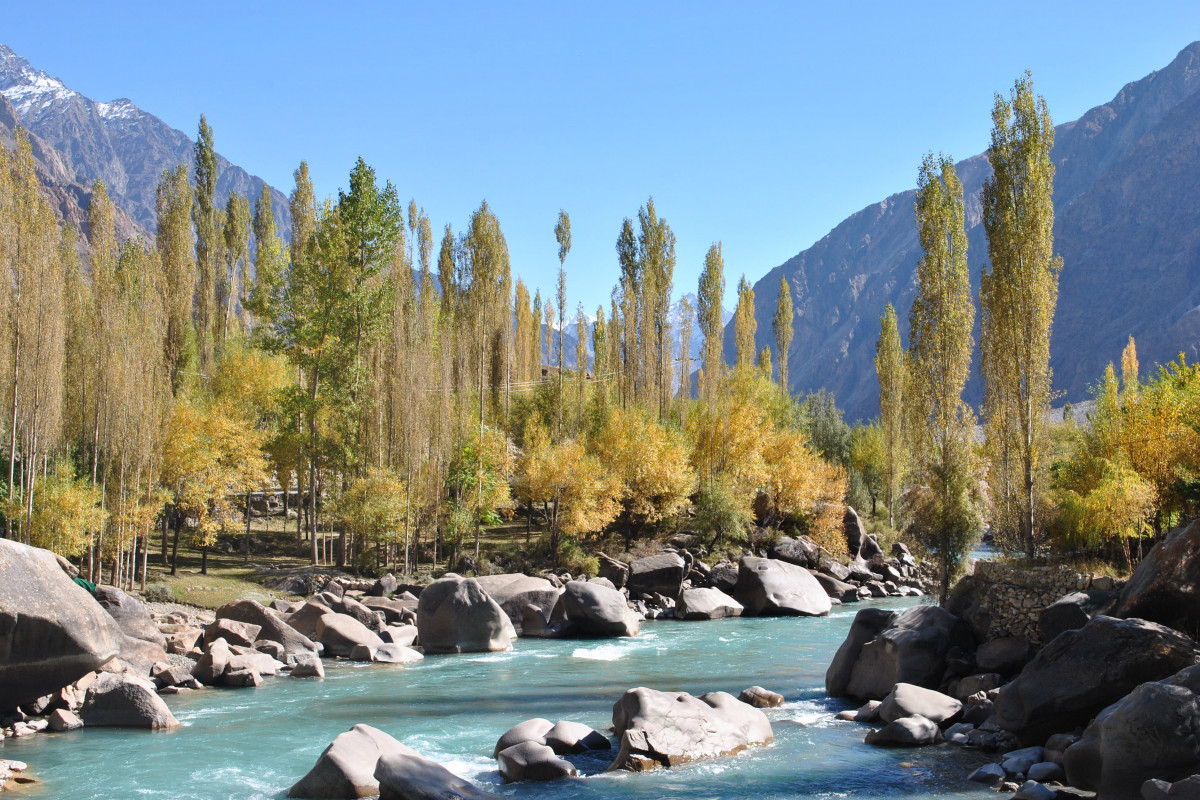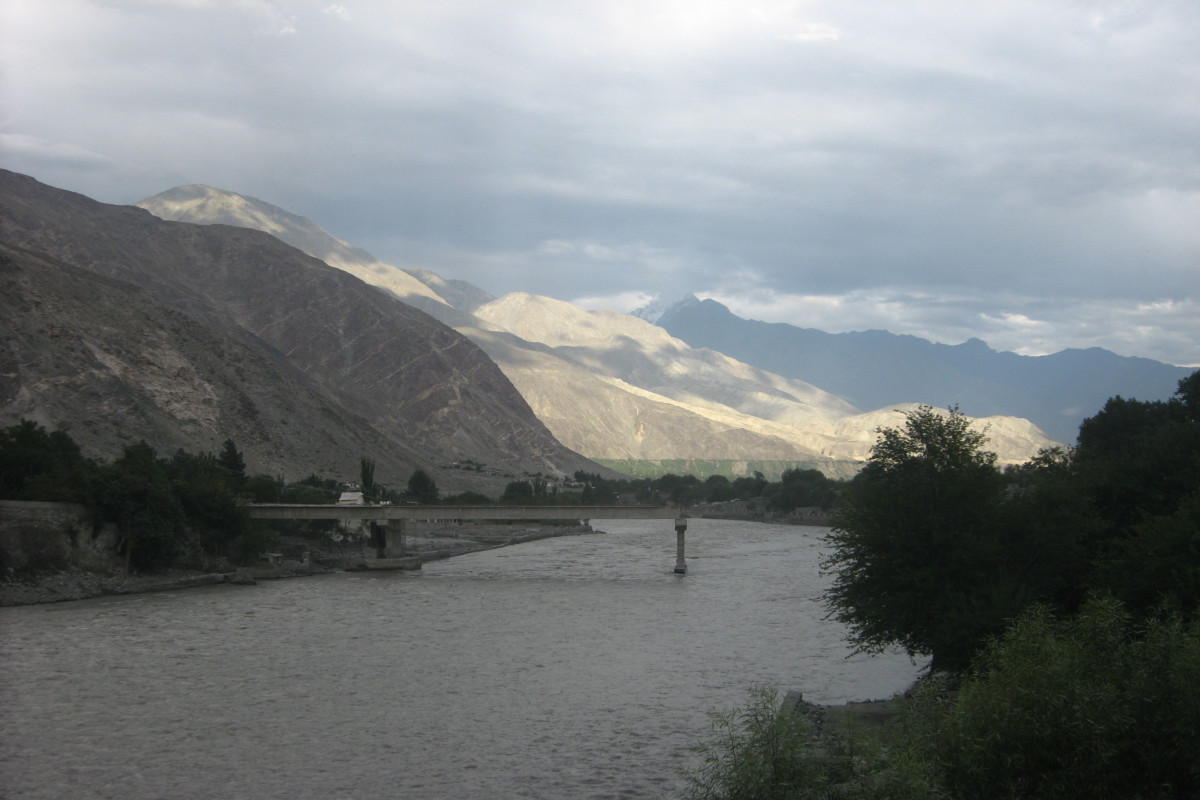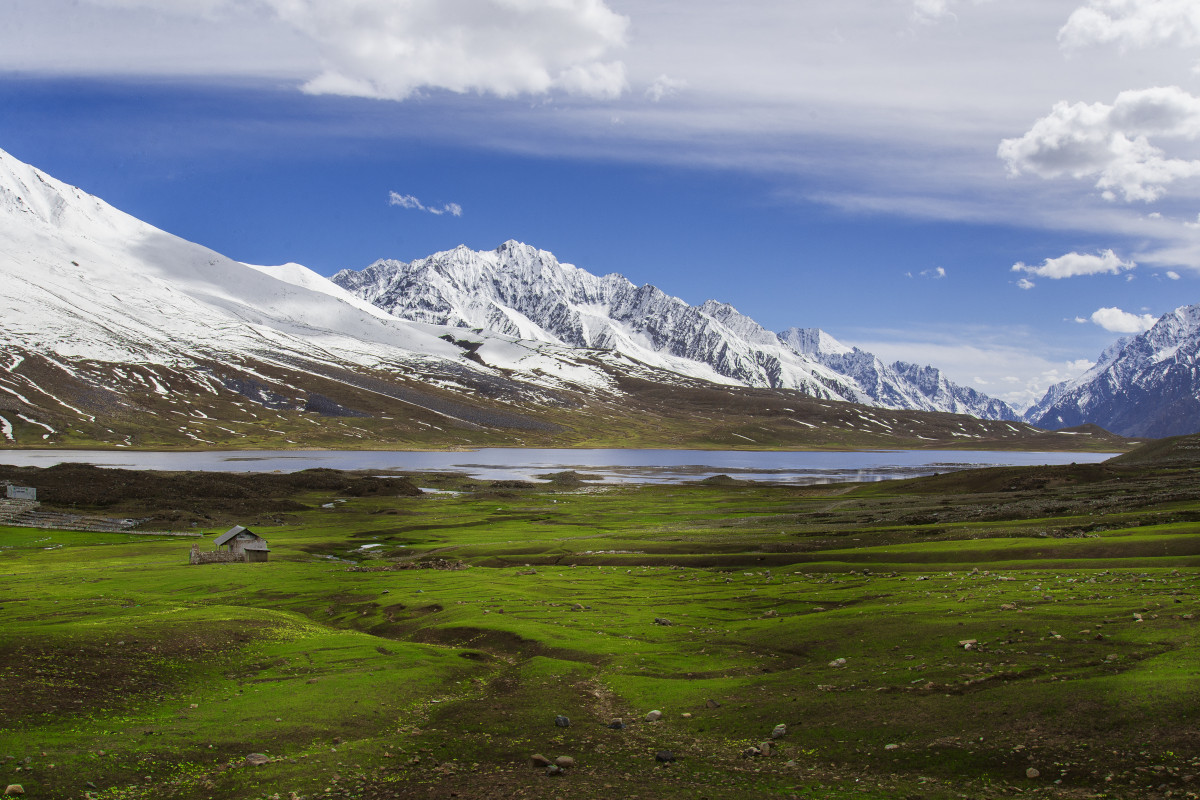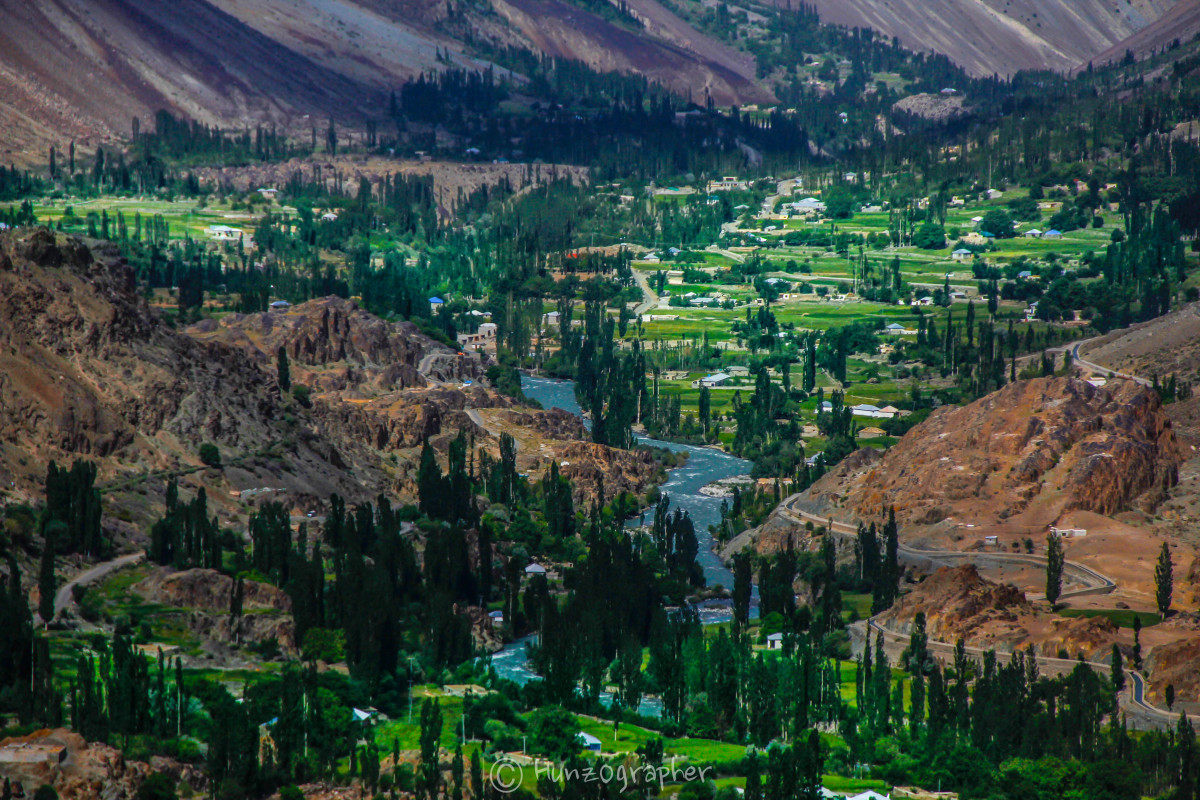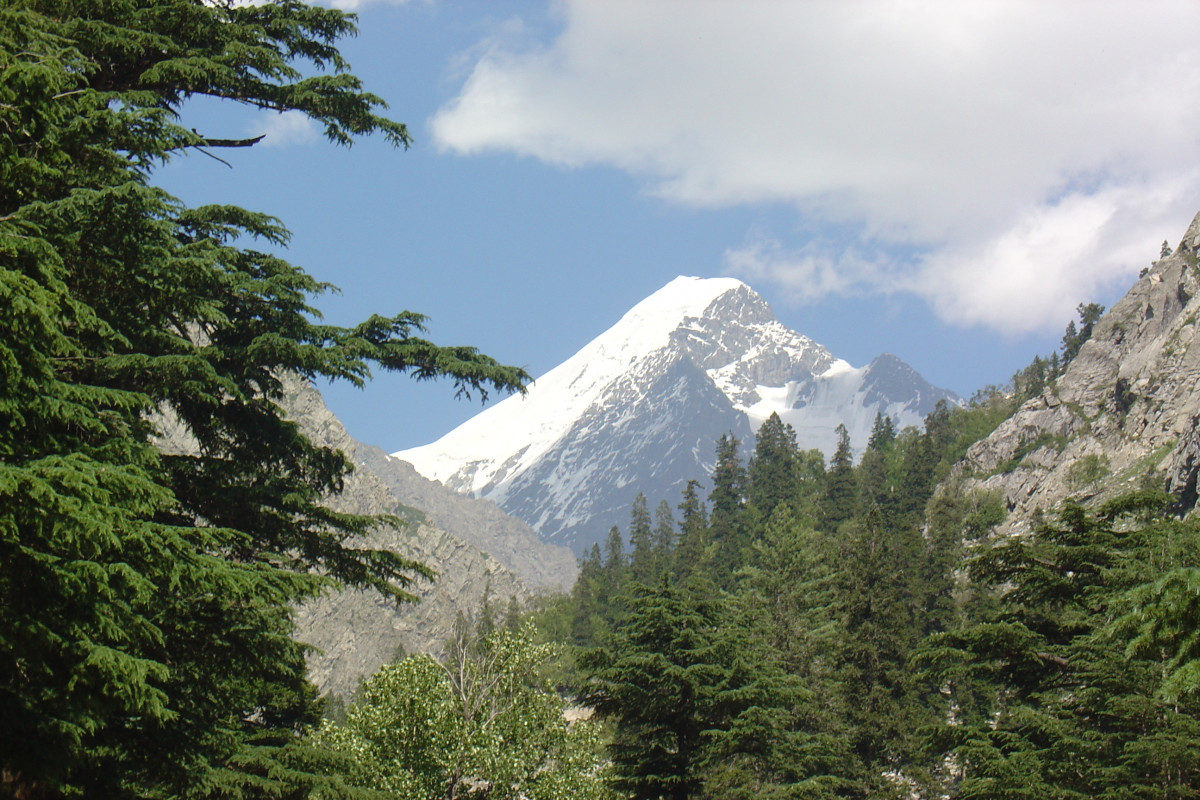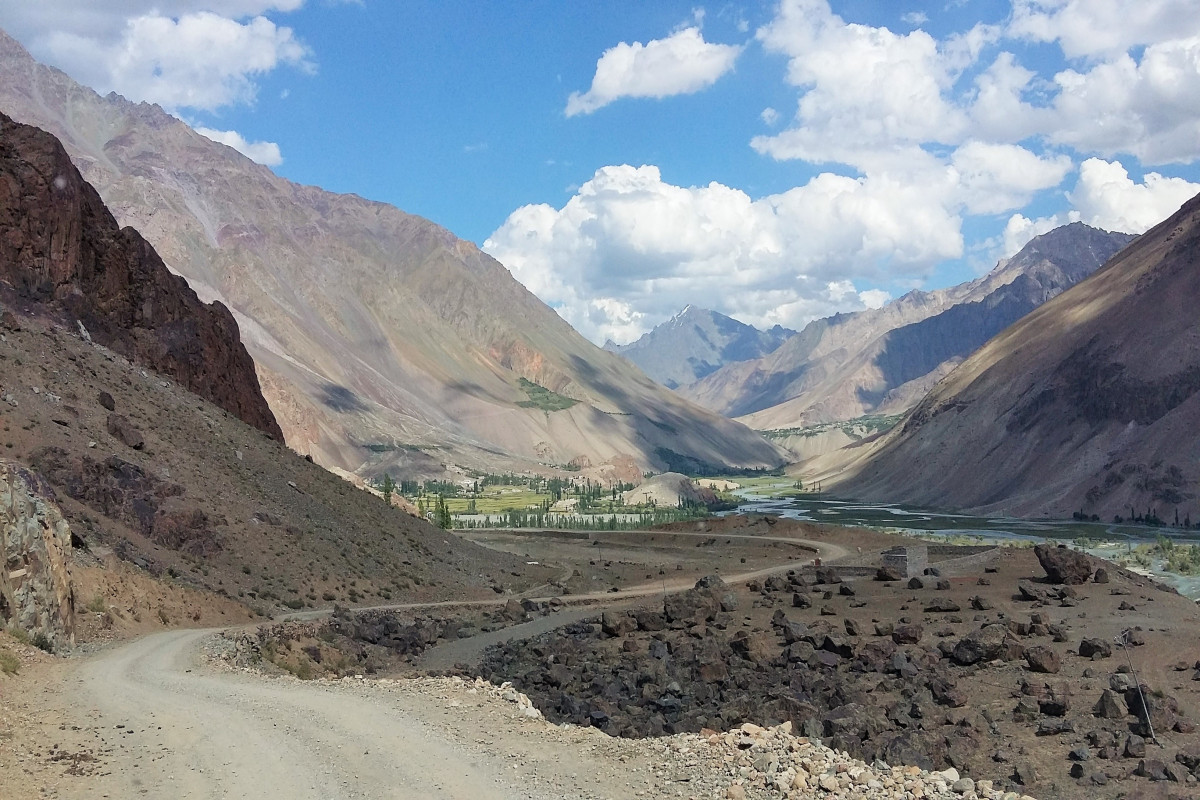Phander Lake
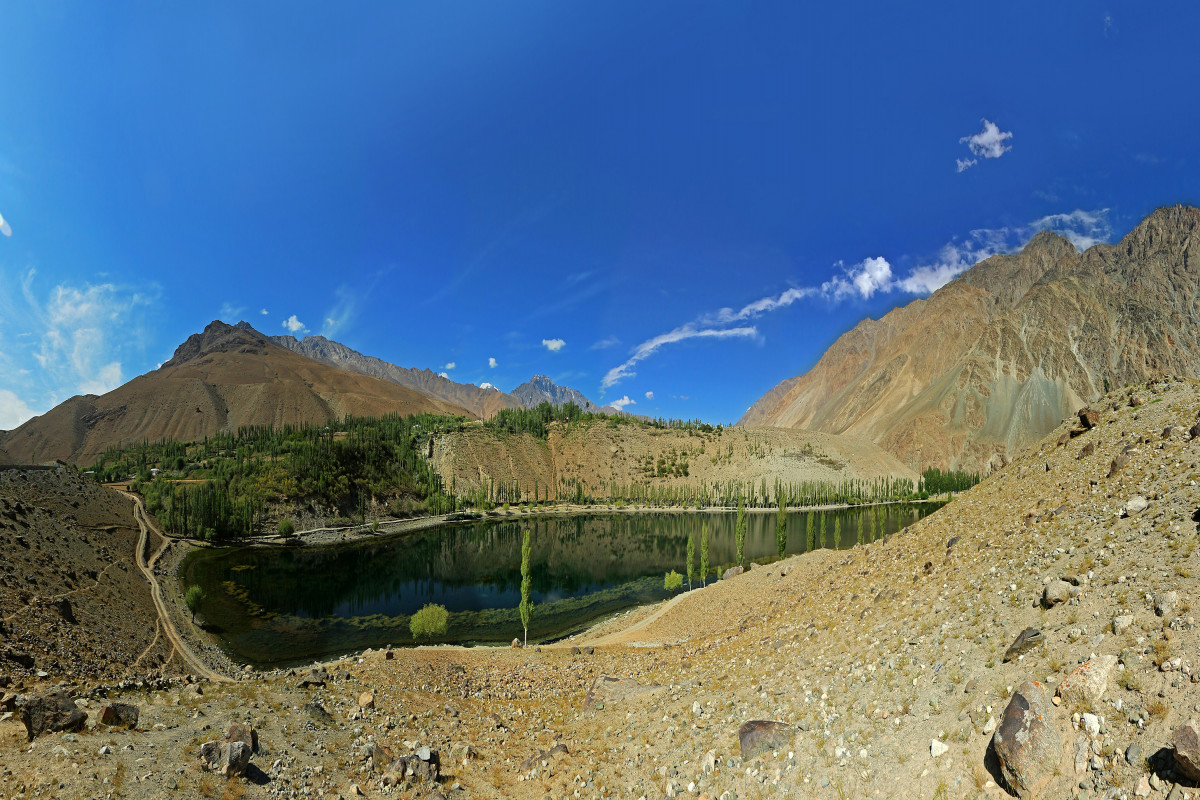
Place Details
Phander Lake is a picturesque alpine lake located in the Phander Valley of the Ghizer District in the Gilgit-Baltistan region of Pakistan. The lake is situated at an altitude of 3,800 meters (12,500 feet) above sea level and is surrounded by towering mountains, lush green forests, and sprawling meadows. Phander Lake is a popular tourist destination for both domestic and international visitors due to its stunning natural beauty and unique cultural heritage.
The lake is fed by the Phander River, which originates from the Shandur Pass and flows through the valley before joining the Gilgit River. The water of the lake is crystal clear and is home to various species of fish, including trout and snow trout. The surrounding mountains are home to a variety of wildlife, including Himalayan ibex, snow leopard, and brown bear.
One of the unique features of Phander Lake is the traditional wooden boats, known as "Shikaras," that are used by local fishermen to catch fish. Visitors can take a ride on these boats and experience the traditional way of fishing in the lake.
Apart from its natural beauty, Phander Lake is also known for its cultural significance. The valley is home to the Wakhi ethnic group, who have a rich cultural heritage and unique way of life. The Wakhi people are known for their hospitality, and visitors can experience their warm hospitality by staying in traditional Wakhi houses and enjoying local cuisine.
In conclusion, Phander Lake is a hidden gem of Pakistan and is a must-visit destination for nature and culture lovers. The serene beauty of the lake, combined with the unique cultural heritage of the Wakhi people, makes it a truly unforgettable experience for all visitors.
Activities
- Hiking
- Camping
- Boating
- Fishing
- Photography
- Wildlife Watching
- Cultural Events
Near Attractions
Weather Details
- Weather: Light Rain
- Temperature: 3º (3º - 3º)
- Clouds: 100%
- Feels Like: 0º
- Humidity: 99%
- Pressure: 1,014 hPa
- Wind Speed: 11 kmh
- Visibility: 1.1 km
Gallery
Backpacking Checklist
For Hiking Backpack
1. Proper footwear: Choose sturdy, comfortable shoes or hiking boots that fit well and provide good support.
2. Clothing: Dress in layers appropriate for the weather, and bring extra clothing in case of changes in temperature or unexpected weather conditions.
3. Navigation tools: Bring a map, compass, or GPS device, and know how to use them.
4. First aid kit: Include items such as bandages, gauze, antiseptic wipes, and a blister kit.
5. Water: Bring plenty of water or a water filtration system to ensure clean drinking water is available.
6. Food: Bring enough food to sustain energy during the hike, including snacks and meals.
7. Sun protection: Wear sunscreen, sunglasses, and a hat to protect from sunburn and heat stroke.
8. Emergency shelter: Bring a lightweight emergency shelter, such as a tarp or space blanket.
9. Lighting: Bring a headlamp or flashlight with extra batteries.
10. Communication device: Bring a cell phone or other communication device in case of emergencies.
11. Insect repellent: This can help prevent bug bites and diseases carried by insects.
12. Personal hygiene items: Bring toilet paper, hand sanitizer, and any necessary toiletries.
For Camping Backpack
1. Tent: A sturdy, waterproof tent is essential for shelter from the elements.
2. Sleeping gear: This includes a sleeping bag, sleeping pad, and pillow.
3. Cooking equipment: Depending on the type of camping, this may include a camp stove, fuel, cookware, utensils, plates, cups, and a cooler.
4. Water filtration system: If there's no potable water available at the campsite, a water filtration system is important for providing clean drinking water.
5. Lighting: This can include a lantern, headlamp, or flashlight.
6. First aid kit: It's always a good idea to have a basic first aid kit on hand for emergencies.
7. Personal hygiene items: This includes soap, toothbrush, toothpaste, towel, and hand sanitizer.
8. Clothing: Bring appropriate clothing for the weather and activities planned, including rain gear, warm layers, and sturdy footwear.
9. Maps and navigation tools: It's important to have a map and compass, and to know how to use them, in case of getting lost.
10. Trash bags: Leave no trace by packing out all trash and litter.
11. Insect repellent: This can help prevent bug bites and diseases carried by insects.
12. Sunscreen: Protect your skin from the sun's harmful rays.
For Boating Backpack
1. Life jackets: One of the most important safety items for boating is a properly fitting life jacket for each person on board. Make sure the life jackets are US Coast Guard approved and appropriate for the type of boating being done.
2. Emergency signaling devices: Flares, a whistle, and a signaling mirror are important for attracting attention and signaling for help in case of an emergency.
3. Fire extinguishers: Boats should have at least one fire extinguisher on board, and it should be regularly maintained and accessible.
4. Navigation lights: Boats should have proper navigation lights for use in low visibility conditions.
5. First aid kit: A basic first aid kit can be essential for treating minor injuries on board.
6. Throwable flotation device: Boats over a certain length are required to have a throwable flotation device, such as a ring buoy or a cushion, in case someone falls overboard.
7. Communication devices: It's important to have a way to communicate with others on board or with emergency services. This could include a VHF radio, cell phone, or satellite phone.
8. Weather monitoring: Keeping an eye on weather conditions can help prevent dangerous situations on the water.
For Fishing Backpack
1. Fishing rod and reel: You'll need a fishing rod and reel that are appropriate for the type of fishing you plan to do. Consider the species of fish you want to catch, the water conditions, and your skill level when selecting your equipment.
2. Fishing line: You will need fishing line that is appropriate for your rod and reel. The type of line you choose will depend on the species of fish you're targeting, as well as the water conditions.
3. Hooks and bait: You will need hooks and bait to catch fish. The type of hook and bait you use will depend on the species of fish you're targeting.
4. Tackle box: You'll need a tackle box to store all your fishing gear, such as hooks, bait, lures, and sinkers.
5. Fishing license: Make sure to obtain a fishing license before your trip to avoid any legal issues.
6. Sun protection: Bring sunscreen, a hat, and sunglasses to protect yourself from the sun.
7. Clothing: Dress appropriately for the weather conditions and bring comfortable clothing that allows for freedom of movement.
8. Cooler: You'll need a cooler to store your catch and keep it fresh until you can prepare it.
9. Knife: A knife can be useful for cleaning and preparing your catch.
10. First-aid kit: Accidents can happen, so it's important to bring a basic first-aid kit with items such as bandages, antiseptic, and pain relievers.
For Photography Backpack
1. Camera: Of course, you will need a camera to take photos. Choose a camera that suits your needs and skill level, whether it's a smartphone camera, point-and-shoot camera, or a DSLR.
2. Lenses: Depending on your photography goals, you may want to bring different lenses for your camera, such as a wide-angle lens, a telephoto lens, or a macro lens.
3. Tripod: A tripod can be useful for stabilizing your camera and taking steady shots, especially in low light conditions.
4. Filters: Filters can help you achieve certain effects in your photos, such as a polarizing filter to reduce glare or a neutral density filter to create long exposures.
5. Lens cleaning kit: Dust and dirt can easily get on your lenses, so it's important to bring a lens cleaning kit to keep them clean and free of smudges.
6. Spare batteries and memory cards: Don't forget to bring spare batteries and memory cards to ensure that you don't run out of power or storage space while taking photos.
7. Backpack or camera bag: To keep your camera and accessories organized and protected, consider bringing a backpack or camera bag designed for outdoor photography.
8. Knowledge of photography basics: It's important to have a basic understanding of photography principles, such as aperture, shutter speed, and ISO, to ensure that you get the shots you want. Consider taking a photography course or reading up on these principles to improve your skills.
9. External flash or lighting equipment: If you're shooting in low light conditions, an external flash or lighting equipment can help illuminate your subject and create a better exposure.
10. Remote shutter release: A remote shutter release can help you take photos without touching your camera, which can help reduce camera shake and ensure sharper photos.
General/Basic Backpack
1. Water bottle: Stay hydrated during your travels.
2. Camera: Capture memories of your trip.
3. Sunscreen: Protect your skin from the sun.
4. Snacks: Keep hunger at bay between meals.
5. First aid kit: Be prepared for any minor emergencies.
6. Umbrella or rain jacket: Protect yourself from the elements.
7. Map or guidebook: Navigate your destination with ease.
8. Cash and cards: Have a variety of payment options.
9. Portable charger: Keep your devices charged on the go.
10. Comfortable clothing and footwear: Wear clothes suitable for the climate and activities planned.
Remember, the specific items you pack may vary depending on your destination, length of trip, and personal preferences.
Place Map
Reviews
5
4
3
2
1
